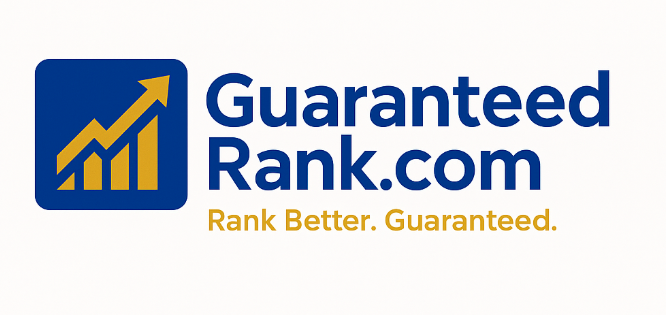When optimizing for SEO in the education sector, there are several key considerations to ensure that your website ranks well in search engines, attracts relevant traffic, and effectively meets the needs of students, parents, and educators. Here are the main areas to focus on:
1. Keyword Research and Content Strategy
- Targeted Keywords: Focus on keywords that are specific to the education sector, such as "online degree programs," "best colleges for engineering," or "high school tutoring services." Use tools like Google Keyword Planner, SEMrush, or Ahrefs to identify high-volume and low-competition keywords.
- Local SEO: If your educational institution is region-specific, incorporate location-based keywords (e.g., "university in New York" or "private school in California").
- Long-Tail Keywords: These are more specific search queries that are easier to rank for. For instance, instead of targeting "online courses," try "best online courses for computer science."
- Answering Queries: Students often search for answers to questions such as “How to apply to a university?” or “What are the prerequisites for a nursing degree?” Make sure your content addresses common questions in a detailed and accessible way.
2. Optimizing for User Experience (UX)
- Mobile Optimization: Since a large number of students access information on mobile devices, it’s essential that your website is fully responsive and loads quickly on smartphones and tablets.
- Easy Navigation: Ensure your site has a user-friendly structure, allowing visitors to easily find the information they need—whether it's about courses, admissions, or faculty.
- Clear Calls to Action (CTAs): Encourage users to take the next steps, such as applying, downloading a brochure, or getting in touch with an admissions officer. Well-placed CTAs improve conversions.
3. On-Page SEO
- Title Tags and Meta Descriptions: Use descriptive and keyword-rich title tags and meta descriptions to improve visibility on search engine results pages (SERPs).
- Headings (H1, H2, H3, etc.): Structure your content with appropriate heading tags to make it easy for both users and search engines to understand the page content.
- Image Optimization: Ensure images (e.g., campus photos, course diagrams) are optimized with alt text that includes relevant keywords. This is particularly important for educational institutions that may rely heavily on visual content.
- Internal Linking: Use internal linking to guide visitors to other relevant sections of your website (e.g., linking from a course page to the admissions page). This helps search engines crawl your site effectively and increases user engagement.
4. Content Quality and Value
- Educational Content: Create high-quality, informative, and engaging content that answers the specific needs of students. This could include blog posts, guides, course descriptions, or FAQs.
- Content Types: Use a mix of content types, such as articles, videos, infographics, podcasts, and webinars, to reach different audiences. For example, video tours of your campus or student testimonials can be compelling for prospective students.
- Regular Updates: Keep your content fresh and up-to-date. Regularly updating course offerings, staff details, events, and policies signals to Google that your website is active and relevant.
5. Technical SEO
- Page Speed: Fast loading times are crucial, particularly for educational websites with many multimedia elements. Use tools like Google PageSpeed Insights to identify areas for improvement.
- Secure Website (HTTPS): Ensure that your site is secure with an SSL certificate. This is not only important for user trust but also a ranking factor in SEO.
- XML Sitemap: Make sure your website has an updated XML sitemap so that search engines can easily crawl and index your content.
- Structured Data (Schema Markup): Implement structured data to enhance your presence in search results. For example, using schema for course information, reviews, and ratings can make your listing stand out.
6. Backlink Strategy
- Quality Backlinks: Secure backlinks from authoritative websites in the education sector, such as educational blogs, academic publications, or partnerships with other schools.
- Guest Blogging: Contribute guest posts to educational platforms or institutions, and link back to your website. This helps build domain authority and increase your visibility.
7. Local SEO
- Google My Business (GMB) Profile: Set up and optimize your Google My Business listing. Include accurate information such as location, contact details, and course offerings. Encourage reviews from current students and alumni.
- Local Citations: Ensure that your institution’s name, address, and phone number (NAP) are consistent across all directories and listings online.
8. Reviews and Testimonials
- Student Reviews: Encourage students to leave reviews on platforms like Google, Facebook, and third-party review sites. Positive reviews can enhance your credibility and improve your rankings.
- Alumni Success Stories: Showcase testimonials from alumni who have achieved success in their careers, as this content helps build trust and authority for your institution.
9. Social Media Integration
- Social Signals: While social media does not directly impact rankings, it does help to drive traffic to your site and can increase visibility. Share blog posts, course updates, and student achievements on platforms like Facebook, LinkedIn, and Instagram.
- Engaging Content: Create engaging content on social media that resonates with prospective students, such as campus events, student life, and admissions advice.
10. Compliance and Accessibility
- ADA Compliance: Ensure your website is accessible to users with disabilities. This includes text-to-speech functionality, alternative text for images, and easy navigation for those using assistive technologies.
- Data Privacy: Ensure your website complies with data protection regulations, such as GDPR or FERPA, particularly if you're collecting personal information from students.
11. Analytics and Monitoring
- Google Analytics & Search Console: Track traffic, behavior, and conversions on your website using tools like Google Analytics. Google Search Console will help you monitor site health, indexing issues, and keyword performance.
- Conversion Tracking: Set up conversion tracking to monitor key actions like form submissions, brochure downloads, or application submissions to gauge the effectiveness of your SEO efforts.
By paying attention to these SEO elements and tailoring your strategies to the education sector, you can enhance your website’s visibility, user engagement, and conversions.



![What strategies did [Company C] use to increase organic traffic?](https://blogger.googleusercontent.com/img/b/R29vZ2xl/AVvXsEgEAAqB4yJKK0eEEHH_4hjO5-75jSTykTGneli0AXc7M9IZKSOybAfNHBz3edlFut_8IwMnZNvvpLo6ExhV2aUNNsYOHs-s8xijFjCMAxeCGZp49OkyWXN-d9AbfUFhjxInVIg2dPvvLH27Sc5VmrY7cueBR8_GJdBWq9jJP0QHvcBqitZC2t6nL5b3Qj4/w72-h72-p-k-no-nu/Screenshot_86.jpg)







0 Comments